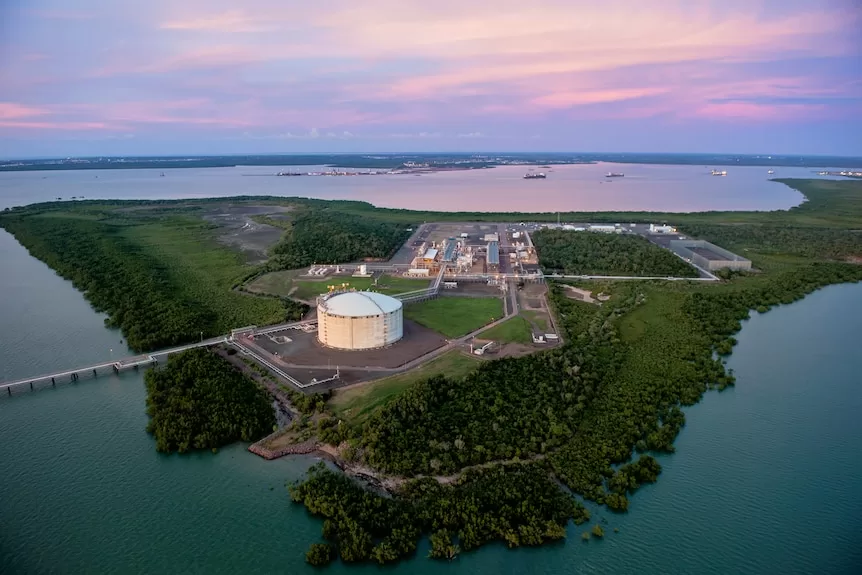- In short: Italian company Eni says it is reviewing plans to develop a new gas field in the Timor Sea to reduce its environmental footprint.
- The gas field has a very high carbon dioxide content, making it environmentally risky and expensive to develop.
- What’s next? Eni has put its development plans on hold while it reassess the project.
Italian resource giant Eni is reviewing multi-billion-dollar development plans for an extremely carbon-intensive new gas field in the Timor Sea.
Last year the company said it was aiming to reach a final investment decision on its Verus gas field — formerly known as Evans Shoal — 330 kilometres north-west of Darwin.
Verus’s gas contains a high makeup of carbon dioxide (CO2), with an average of 27 per cent.
If developed, it would be the most carbon-intensive gas field in Australia, according to a 2023 report by the Institute of Energy Economics and Financial Analysis (IEEFA), which labelled the project a “carbon bomb”.
IEEFA estimated Verus emissions could amount to at least 7.5 million tonnes of carbon dioxide per year, not counting the emissions produced when the gas is burnt by customers.
Eni confirmed to ABC Rural it was now “reviewing alternative Verus development concepts, all of them aiming to minimise the environmental footprint of the project”.
“The front-end engineering design will commence when pre-feasibility activities are completed and following the full alignment with all stakeholders involved, notably the Northern Territory and Australian governments,” an Eni spokesperson said.
High carbon dioxide content poses challenges
Wood Mackenzie senior research analyst Anne Forbes said the high carbon content of Verus’s gas posed significant challenges for Eni.
“Clearly that’s not very useful and it’s an environmental hazard — we don’t want to release that CO2 into the atmosphere,” Dr Forbes said.
“Australian legislation also now says that CO2 needs to be dealt with, it can’t be vented into the atmosphere.
“So there is a lot of CO2 that Eni needs to deal with; there are options but they’re all expensive, so it’s going to add capital cost onto the project.”
Dr Forbes said Eni would likely be assessing ways to reduce Verus’s emissions at the gas field and onshore.
“They could be looking at greener options for their LNG plant,” she said.
“So rather than a conventional process where a whole lot of gas is used for the energy source to make LNG, potentially they could be looking at an electric drive train LNG plant with green energy to run it.”
Carbon capture and storage proposal
Last year, Eni outlined plans to reduce Verus’s high CO2 content through a yet-to-be-established carbon capture and storage (CCS) project proposed by Santos, 500km west of Darwin in the Timor Sea.
Eni claimed it could produce “carbon-neutral LNG” for export through the CCS project by storing the CO2 separated from Verus’s gas in the depleted Bayu Undan reservoir, in which it holds an 11 per cent stake.
IEEFA energy analyst Kevin Morrison said CCS was unproven at large scale and the best way for Eni to minimise Verus’s environmental impact would be to “leave the gas in the ground”.
Mr Morrison said even if CCS was successful in reducing the carbon content before Verus’s gas was exported as LNG, carbon dioxide “would still be pumped into the atmosphere once the gas is burnt by Eni’s customers”.
“Eni has ended up with a problem child here, because in a world where there’s a lot of focus on reducing emissions, they’ve ended up with one of the most emissions-intensive gas fields that’s around.
“It comes as no surprise that Eni has put this project on the backburner.”
An underwater pipeline from the Verus gas field would run 100 metres parallel to Santos’s Barossa gas pipeline for much of its 381-kilometre length, according to a 2023 Eni presentation seen by ABC Rural.
The route of the Barossa gas pipeline has been the subject of significant concern to some traditional owners on the Tiwi Islands.
Key stories of the day for Australian primary producers, delivered each weekday afternoon.
